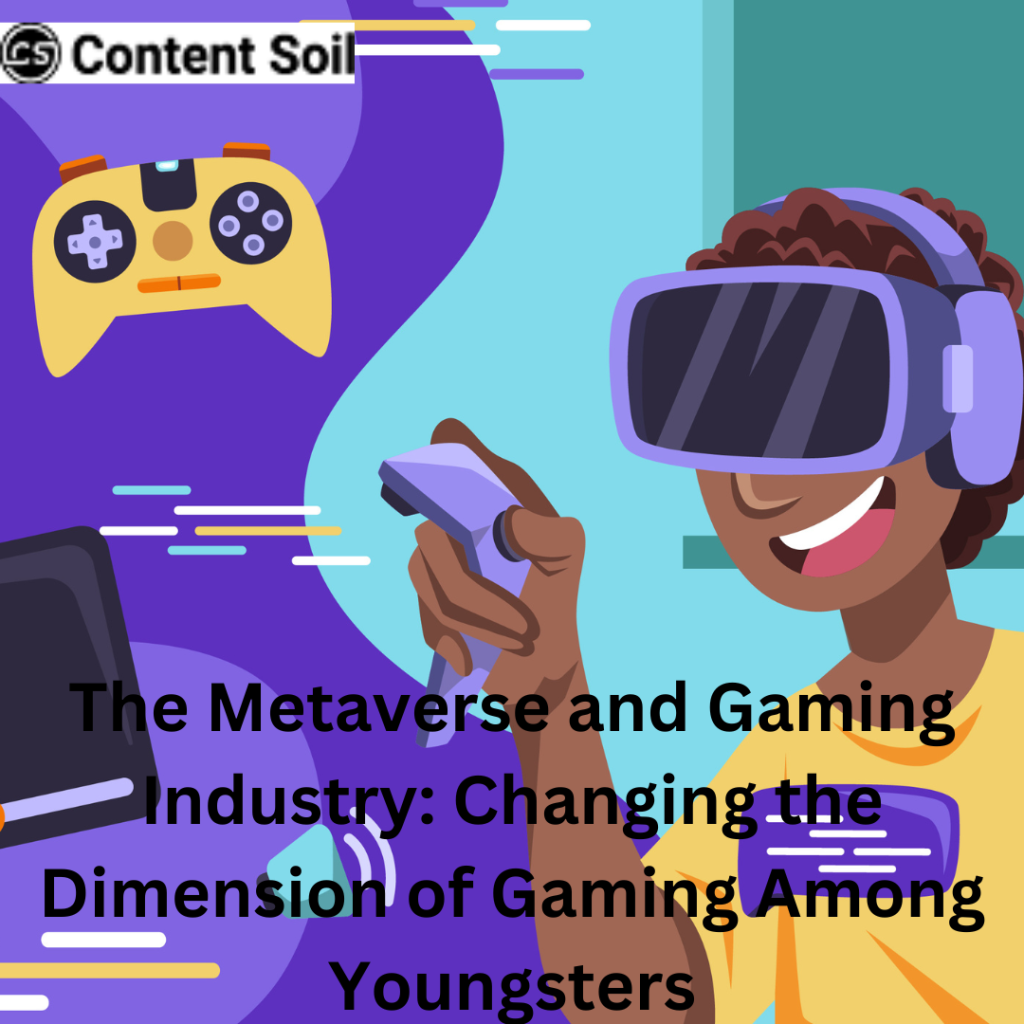Introduction :
The rapid advancements in technology have paved the way for revolutionary changes in various sectors, and the gaming industry is no exception. In recent years, the emergence of the metaverse, a virtual realm where users can interact with a computer-generated environment and other users, has sparked tremendous excitement. This blog explores how the metaverse and the gaming industry are set to transform the gaming experience for youngsters. By examining the potential benefits, immersive features, and social aspects of the metaverse, we will gain insight into the profound impact it is likely to have on the younger generation’s engagement with gaming.
The Metaverse: A New Dimension in Gaming :
The metaverse represents a convergence of virtual reality (VR), augmented reality (AR), and the internet, creating a shared online space that blurs the lines between the physical and digital worlds. With the metaverse, gamers can explore vast virtual landscapes, undertake quests, and interact with other players on an unprecedented scale. This immersive experience transcends traditional gaming boundaries and offers limitless possibilities for the younger generation.
One significant aspect of the metaverse is its ability to provide a persistent and interconnected virtual environment. Unlike traditional video games that are limited to individual game sessions, the metaverse allows for continuous gameplay and progression. Players can build their virtual identities, accumulate achievements, and engage in ongoing narratives within a persistent universe. This longevity and connectivity foster a sense of investment, progression, and community, attracting youngsters who seek a more immersive gaming experience.
Immersive Features: Redefining Gameplay :
The metaverse introduces a wide range of immersive features that go beyond what conventional gaming platforms offer. By leveraging VR and AR technologies, gamers can experience a heightened sense of presence and engagement. The metaverse enables players to physically move within virtual spaces, interact with objects, and even feel haptic feedback, creating a more sensory-rich gaming experience. These advancements captivate the imagination of youngsters and provide a level of immersion that was previously unimaginable.
Additionally, the metaverse fosters innovation in gameplay mechanics. With the ability to seamlessly blend real-world and virtual elements, gamers can encounter dynamic and unpredictable scenarios. For example, an augmented reality game could incorporate a player’s physical surroundings into the gameplay, resulting in unique challenges and interactions. This fusion of the digital and physical realms not only enhances gameplay but also encourages players to explore and engage with their environment, stimulating curiosity and creativity among young gamers.
Social Aspects: Community and Collaboration :
The metaverse’s social aspects are equally compelling for youngsters. Through shared virtual spaces, players can connect with others, forming communities, and forging friendships across geographical boundaries. The metaverse transcends the constraints of physical distance, providing a platform for global interaction and collaboration. This social connectivity enables youngsters to meet like-minded individuals, share experiences, and collaborate on projects or quests within the virtual realm.
Furthermore, the metaverse’s social features promote inclusivity and diversity. Regardless of one’s physical appearance, background, or abilities, individuals can create avatars and express themselves freely. This virtual freedom encourages self-expression and allows young gamers to explore their identities in a supportive environment.
Conclusion :
As the metaverse continues to evolve, it holds immense potential to reshape the gaming industry and revolutionize the gaming experience among youngsters. By offering an expansive virtual realm, immersive features, and robust social aspects, the metaverse provides an unprecedented level of engagement and interactivity. Young gamers can explore boundless virtual worlds, engage in novel gameplay mechanics, and connect with a global community.
However, it is crucial to address potential challenges such as privacy, security, and equitable access to ensure the metaverse remains a safe and inclusive space. With careful consideration of these aspects, the metaverse can indeed change the dimension of gaming for the better, empowering the younger generation to explore, create, and connect in ways that were previously unimaginable. The future of gaming is undoubtedly an exciting and immersive one, driven by the metaverse’s transformative potential.

